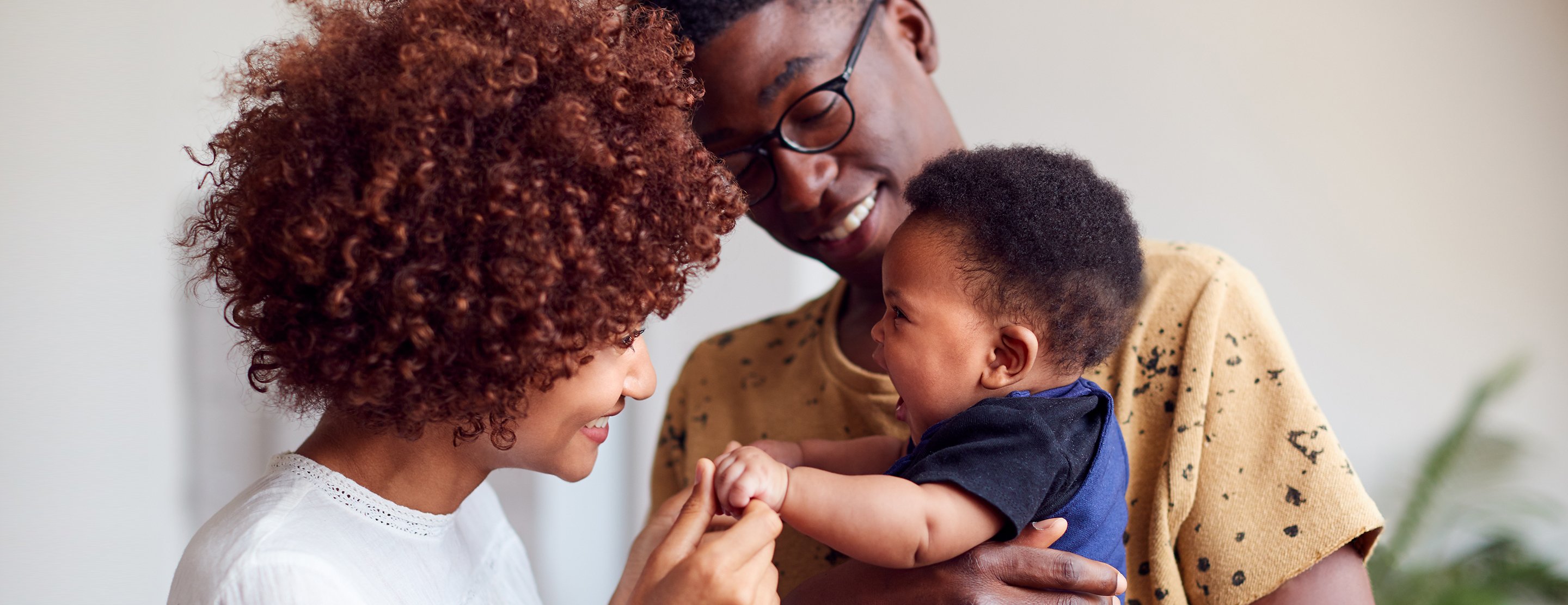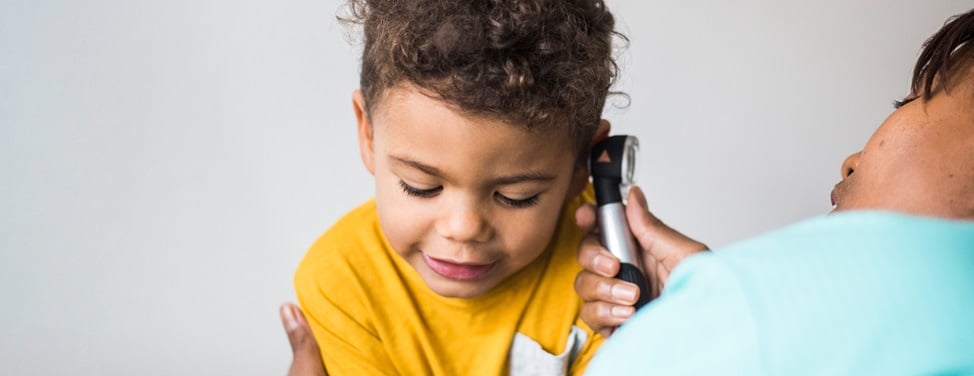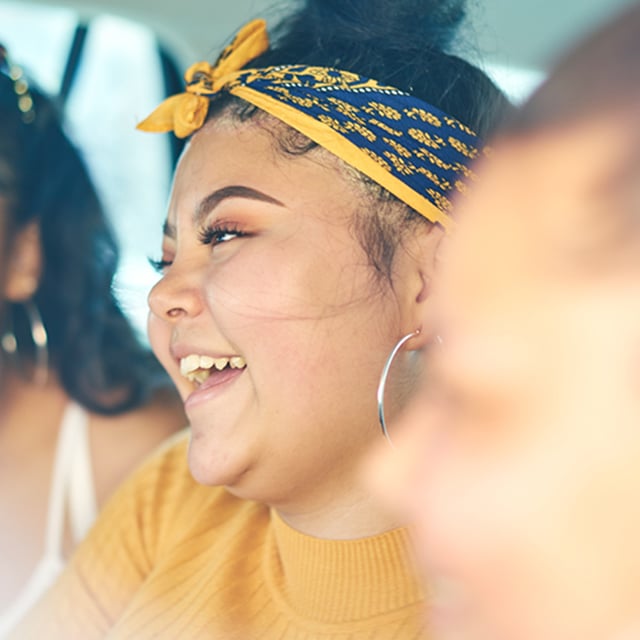Here's a list of normal hearing behaviors and key signs to watch for as your child grows. If your baby's hearing was not checked at birth, talk to your pediatrician about scheduling a hearing screening test.
Birth to 3 Months
- Quiets to familiar sounds or voices, for example your baby settles down when he or she hears a parent's voice
- Reacts to loud noises by waking, crying, startling, blinking or stopping sucking
3 to 6 Months
- Starts to turn eyes or head toward sounds such as voices or noise-making toys when the person or toy is out of sight
- Reacts to your voice
- Starts to make speech sounds such as "ga," "ooh" and "ba," as well as "p" and "m" sounds
6 to 9 Months
- Understands simple words such as "no," "bye-bye" and "juice"
- Responds to his or her own name and turns when called
- Starts to babble, making sounds such as "dadada" or "bababa"
9 to 12 Months
- Responds to both soft and loud sounds
- Imitates animal sounds, such as a dog barking or cow mooing
- Points to favorite toys or foods when asked
12 to 18 Months
- Begins to use his or her first words, usually around 12 months
- Uses 10 or more words by 18 months
- Can follow simple spoken directions such as "get the ball"
- Understands about 50 words by 18 months
18 to 24 Months
- Uses 20 or more words
- Starts combining words into short phrases, such as "more juice"
- Uses many different speech sounds
- Listens to simple stories and songs
2 to 3 Years
- Uses two- to three-word sentences
- Follows two-step directions, such as "get the ball and put it on the table"
- At 2 years, other people can understand what the child says some of the time — roughly 25 to 50 percent of the time
- At 3 years, people can understand what the child says most of the time — about 50 to 75 percent of the time
If your child is not showing these developmental signs, it does not necessarily mean that he or she has hearing loss. It does mean, however, that an audiological evaluation should be performed.































